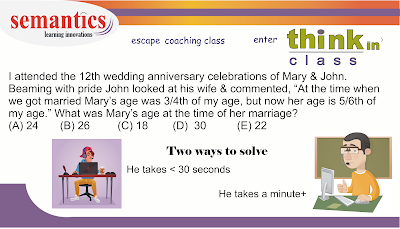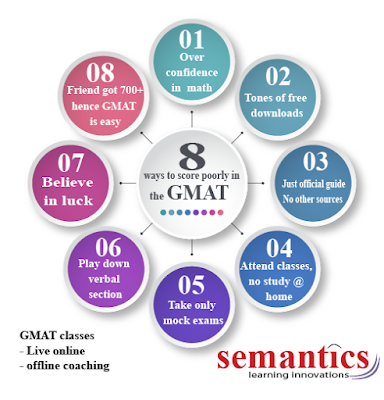Let’s face reality. Few college books prepare you to think critically. But critical thinking skills are extensively tested in both GMAT.
Critical reasoning (referred to also as logical reasoning or analytical reasoning) constitute an array of thinking skills that
of numerical, verbal or non-verbal data.
Numerical reasoning questions measures your ability to apply reasoning in a math setting whereas non-verbal reasoning involves interpreting symbols and pictures, the latter skills hardly tested in higher order aptitude tests. A majority of reasoning questions tested in these exams are text-based
Critical reasoning (referred to also as logical reasoning or analytical reasoning) constitute an array of thinking skills that
- involve
- analysis
- synthesis
- evaluation
of numerical, verbal or non-verbal data.
Numerical reasoning questions measures your ability to apply reasoning in a math setting whereas non-verbal reasoning involves interpreting symbols and pictures, the latter skills hardly tested in higher order aptitude tests. A majority of reasoning questions tested in these exams are text-based
(verbal reasoning).
Logic is the science of correct reasoning. It is integral to mathematics and philosophy. There are many logic concepts that originate from the above disciplines and applied in GMAT tests.
The common test areas, viz. critical reasoning (short passages that present arguments), argument essay and integrated reasoning draw immensely from philosophy and logic. These questions requires you to analyze issues, reason logically, and argue effectively. These skills are essential to succeed in higher studies as well as in careers.
The common test areas, viz. critical reasoning (short passages that present arguments), argument essay and integrated reasoning draw immensely from philosophy and logic. These questions requires you to analyze issues, reason logically, and argue effectively. These skills are essential to succeed in higher studies as well as in careers.
How to build reasoning skills
1. Using test prep resources
A common practice among test aspirants is to seek help from coaches, preparatory test guides and online discussion forums in order to learn tips and strategies to crack reasoning questions. No doubt some of these are useful sources to make you motivated and test ready. However exercise caution; desist from using these indiscriminately; do quality check.
2. Reading varied texts
Those who are habituated to reading will over time become critical thinkers, and thereby succeed in many areas of aptitude tests. It is to be noted that the question stimulus in reasoning tests are drawn from everyday knowledge rather than from academic disciplines. Being well-read will make you familiar with the content of these problems.
3. From principles of logic
A third and highly productive way to build your logical reasoning is to master elementary logic theory. What is logic theory?
Here’s a basic concept in logic.
Statement : Whenever Sara goes to the supermarket, she buys cookies.
You saw Sara this morning carrying a jar of cookies. Can you then infer that Sara has gone to the super market?
No. this is wrong reasoning, because the supermarket is not the only place where Sara buys cookies from.
Let’s consider the scenario: Sara did not buy cookies, can we infer that she did not go to the supermarket? Yes, we can.
In logic theory terms, the original statement can be expressed as,
If A, then B; If not B, then not A. This expression can be applied to a class of problems. Many such formulae can be learnt and applied to logical reasoning. Merely common sense will not work.
There are many books on elementary logic suitable for beginners that can give you solid foundation in critical thinking. You may make use of such sources for your test preparation.
A good book on critical reasoning
One book I would recommend is Critical thinking: A Student’s Introduction by Gregory Basham, William Irwin et al. Online edition of this book is also available.
This book provides all basics consistent with the reasoning historically assessed in tests of reasoning and aligned with the content areas covered in global admission examinations. Hence a good reference source for aptitude trainers too. The real-world examples and proven step- by- step approach to answering questions that this book provides can significantly improve the way you look at reasoning problems. The concepts that you need are; structure and components of arguments, inductive and deductive arguments, method of evaluating arguments and ways to spot common errors in arguments.
Let your preparation involve understanding the logic behind problems and not merely seeking solutions.
Becoming a critical thinker is both an adventure and hard work. Practice. Make mistakes. Learn from them. Improve. In the coming test season, be equipped with a workable set of thinking tools.
















